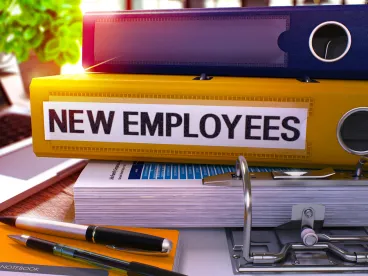As we have previously reported, New York State has enacted several significant measures regarding sexual harassment in the workplace.
Effective October 9, 2018, all New York State employers are required to adopt written sexual harassment prevention policies and institute annual anti-harassment training for employees. After issuing draft documents in August, the State has now issued final model policy and training documents, as well as FAQs and additional guidance on the new laws, which are summarized below.
The State has also issued an “Employer Toolkit” which provides an overview of the final policy and training materials and practical guidance for employers.
Model Sexual Harassment Prevention Policy
Employers are required to adopt and distribute to employees written sexual harassment prevention policies that are compliant with the new law. To satisfy this obligation, employers may (1) adopt the State’s model sexual harassment prevention policy and complaint form, or (2) implement their own policy and complaint form that equals or exceeds the minimum standards provided under the statute consistent with guidance issued by the State. As outlined in the Minimum Standards provided by the State, the policy must:
- prohibit sexual harassment consistent with guidance issued by the Department of Labor in consultation with the Division of Human Rights;
- provide examples of prohibited conduct that would constitute unlawful sexual harassment;
- include information concerning the federal and state statutory provisions concerning sexual harassment, remedies available to victims of sexual harassment, and a statement that there may be applicable local laws;
- include a complaint form;
- include a procedure for the timely and confidential investigation of complaints that ensures due process for all parties;
- inform employees of their rights of redress and all available forums for adjudicating sexual harassment complaints administratively and judicially;
- clearly state that sexual harassment is considered a form of employee misconduct and that sanctions will be enforced against individuals engaging in sexual harassment and against supervisory and managerial personnel who knowingly allow such behavior to continue; and
- clearly state that retaliation against individuals who complain of sexual harassment or who testify or assist in any investigation or proceeding involving sexual harassment is unlawful.
In response to a number of comments submitted on the draft policy and FAQs issued in August, the State made the following notable changes to the final documents issued on October 1:
- References in the model policy to the employer having a “zero-tolerance policy” for sexual harassment and retaliation have been removed, bringing the State’s guidance in line with the federal Equal Employment Opportunity Commission (EEOC)’s position disfavoring the use of the term.
- The State’s model policy:
- no longer requires that the investigation of a complaint be completed “within 30 days” as previously suggested, but rather states that the investigation should be completed “as soon as possible”;
- now makes clear that the investigation process “may vary from case to case”;
- indicates that investigation-related documents should be kept in a “confidential location”; and
- notes that written documentation of the investigation should include “[t]he basis for the decision” regarding the resolution of the complaint, as opposed to simply a statement of any corrective actions that will be taken.
The final FAQs also state that if an employer has already established investigative procedures that are similar to those provided in the State model (in that they provide for a timely and confidential investigation of complaints in a matter that ensures due process for all parties), the employer need not expressly adopt the investigative procedure set forth in the State model. That said, employers must nevertheless outline their investigative procedures in their policy document.
With regard to distribution of the policy, the FAQs state that a signed acknowledgment of receipt is not required, but that employers are “encouraged” to obtain one from employees. Employers must provide employees with a copy of the policy in writing or electronically, and if made available electronically, employees must be able to print a copy for their records.
The State has also finalized its model complaint form, for employees to use when reporting incidents of sexual harassment. Though largely similar to the earlier draft complaint form, the final form contains a few notable updates: (1) the form does not ask whether the individual has filed a claim with a government agency or a lawsuit in connection with the complaint; and (2) nor does the form ask whether employees have hired an attorney (though it does still provide the opportunity to share contact information for a legal representative if the employee has such representation). Also, employers need not include a copy of the complaint form in their anti-harassment policy, as long as the policy informs employees where the form may be found (e.g., on the company’s internal website).
Model Sexual Harassment Training Documents
In a development sure to have employers breathing a sigh of relief, under the final guidance, all New York employees must complete sexual harassment prevention training that meets or exceeds the minimum standards under the law by no later than October 1, 2019, after which future training must be completed on an annual basis. (The State’s earlier draft indicated that the first round of employee training had to be completed by January 1, 2019.) Similarly, while the draft guidance stated that new employees would need to be trained within 30 days of the start of employment, the final guidance provides some flexibility to employers by requiring that new employees complete training as soon as possible after their start date. (The draft guidance stating that such training must be completed in the first 30 days of employment has been removed.)
All full-time and part-time employees, seasonal employees and temporary employees must receive training. Unlike the draft guidance, which indicated that employers would need to train “someone [who] just works for one day for the employer, or . . . works for just one day in NY,” the final guidance states that employers need to train individuals who “work[]a portion of their time in New York State, even if they’re based in another state.”
To satisfy the training requirements, employers may either: (1) adopt the State’s model training script, slides, and/or case studies (discussed further below); or (2) provide other live training or interactive online/video training that meets or exceeds the law’s minimum standards for training. Of particular note under the new guidance, sections in the State’s model training that are “not expressly required in the law” are not required to be included, but instead are “strongly recommended.” Therefore, employers can meet the training requirement as long as their training programs meet the minimum standards set by the law, even if the employer does not use the precise language contained in the State’s model training materials.
Other notable changes made by the State to the draft model training documents and the associated FAQsinclude the following:
- There is no requirement to train (or provide a copy of the harassment prevention policy) to third-party vendors or other non-employees, though employers are “encouraged to provide the policy and training to anyone providing services in the workplace.”
- There is no minimum number of training hours required per year for employees – that is, there is no minimum length of time for each training session.
- With regard to the requirement that training address “additional responsibilities for supervisors”, the final guidance states that all employees (not just managers and supervisors) must be “[made] aware of the extra requirements for those in managerial/supervisory roles.”
- The final guidance provides that in order for training to be “interactive”, some form of employee participation is required. Examples given of such participation include:
- if the training is web-based, it has questions at the end of a section and the employee must select the right answer;
- if the training is web-based, the employees have an option to submit a question online and receive an answer immediately or in a timely manner;
- in an in-person or live training, the presenter asks the employees questions or gives them time throughout the presentation to ask questions;
- web-based or in-person trainings that provide a Feedback Survey for employees to turn in after they have completed the training.
While a live trainer is not required in order to comply with the new requirements, simply having employees watch a training video or read a document, with no feedback mechanism or interaction, would not be considered interactive. Where live trainers are used, however, they must appear in person or via phone, video conference, or other similar remote mechanism.
Nondisclosure Provisions
Finally, although the State’s final guidance does not alter existing requirements pertaining to the confidentiality of sexual harassment claims, the final FAQs do provide some further insight on those requirements.
- The final FAQs retain language from the draft guidance setting forth a three-step process for memorializing that a nondisclosure provision is the preference of the complainant as follows:
- Any nondisclosure term or condition must be provided to all parties, and the complainant shall have 21 days from the date provided to consider such term or condition;
- If, after 21 days, such term or condition is the preference of the complainant, such preference shall be memorialized in an agreement signed by all parties; and
- For a period of 7 days following the execution of an agreement containing such a term or condition, the complainant may revoke the agreement and the agreement shall not become effective or be enforceable until such revocation period has expired.
- The 21-day consideration period cannot be waived, shortened or calculated to overlap with the 7-day revocation period. Rather, the 21-day period must expire before the complainant’s preference can be memorialized in an agreement signed by the parties, and the minimum 7-day period does not start to run until after that agreement is executed.
- Under the final guidance, two agreements are needed to establish a complainant’s agreement not to disclose facts underlying a claim of harassment—one agreement memorializing the complainant’s preference to maintain the allegations as confidential, and a second agreement containing the nondisclosure language and any other terms of the parties’ agreement resolving the dispute.
- The approach to the 21-day consideration period and 7-day revocation period for purposes of sexual harassment nondisclosure provisions differs from similar time periods mandated for waivers of age discrimination claims under the federal Age Discrimination in Employment Act (ADEA). In that regard, the final FAQs explain that “while the practice of some under the [ADEA] is to fold waivers into standard representations and warranties provisions of settlement agreements that can be presented and executed on the spot, in a single agreement, without waiting for the 21-day consideration period to expire, the new state law requires a separate agreement to be executed after the expiration of the 21-day consideration period before the employer is authorized to include confidentiality language in a proposed resolution.”
* * *
With the October 9, 2018 deadline for implementing a new policy on sexual harassment fast approaching, employers are encouraged to take immediate steps to review their current policies and make appropriate updates, or adopt the State’s model language. Similarly, though the initial training deadline has now been extended to October 9, 2019, it is also prudent for employers to begin considering how they will fulfill their training obligations under the law, particularly in light of the training requirements that will become effective on April 1, 2019 for employers covered by the New York City Human Rights Law. We are, of course, monitoring any developments that may arise regarding the New York City training requirements and will keep readers apprised of any updates.






 />i
/>i


